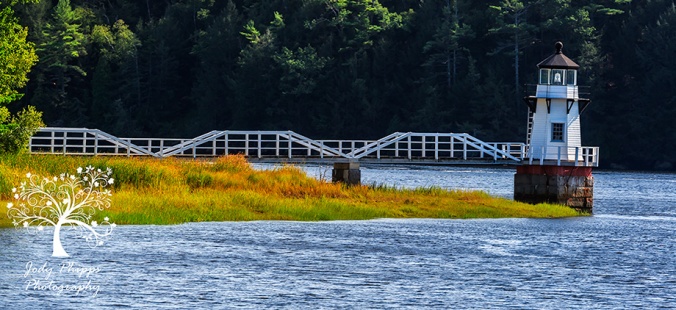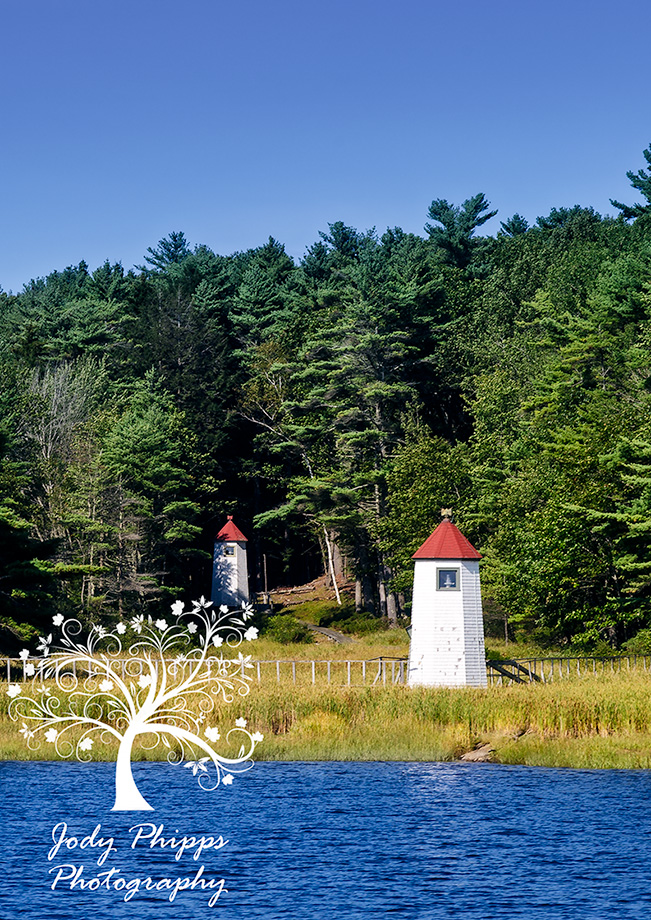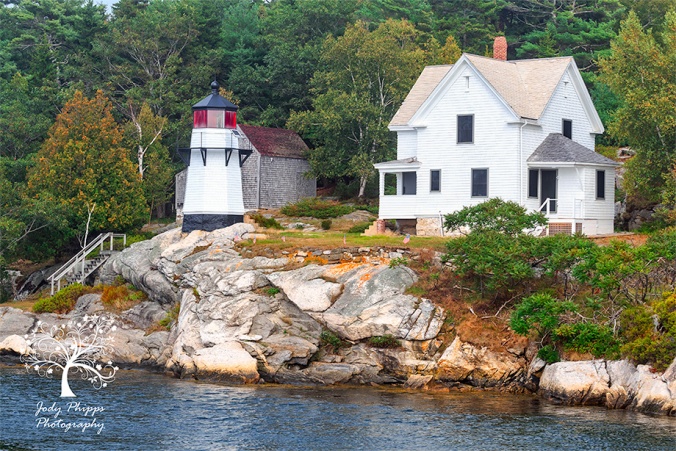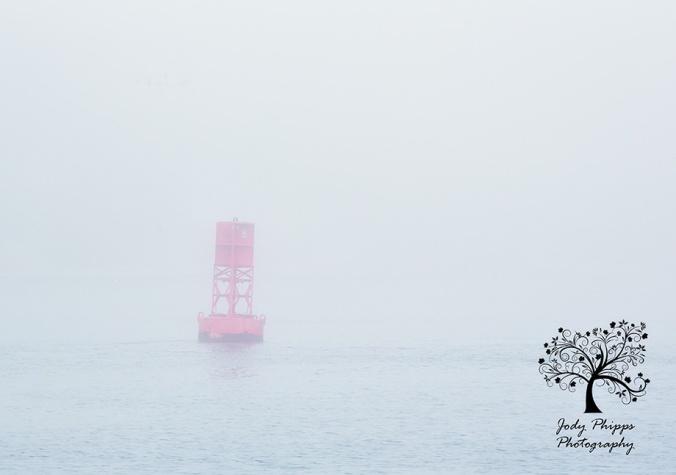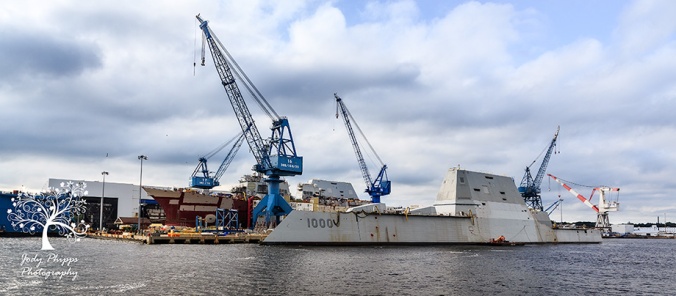On the last Saturday I was in Maine, I had the opportunity to go on a “Lighthouse Lover’s” boat tour through the Maine Maritime Museum in Bath. After boarding the boat, finding a seat up on the top deck, and receiving some safety instructions, our captain pushed away from the dock and we were on our way.
It wasn’t long before we came to our first lighthouse, Doubling Point Light, built in 1898, one of four lighthouses built that year to provide navigational aids up the Kennebec River to the “City of Ships,” Bath. Manned and maintained by the United States Lighthouse Service for nearly 40 years, there were only two keepers that served at the Doubling Point Light, Merritt Pinkham (1898-1931) and Charles W. Allen (1931-1935). As time passed, the government determined that it would be more efficient to run the Doubling Point Lighthouse from the nearby Kennebec River Range Lights and the Doubling Point Light station, excluding the lighthouse itself, was sold for $2,200 to a private owner. The United States Lighthouse Service (USLHS) continued to maintain and operate the lighthouse until 1939 when the USLHS was taken over by the Coast Guard.
After rounding a bend in the Kennebec River, we came upon the Kennebec River Range Lights, also built in 1898. It is the only pair of range lights in Maine with two towers that have identical lights. As a captain would bring his ship upriver, he would know that he was in the channel and still on course when the two lights were aligned. In 1990, the Kennebec River Range Lights became one of the last light stations to be automated in the United States.
Squirrel Point Light House was next on our journey downstream on the Kennebec River. Like the Doubling Point Light, the Kennebec River Range Lights, and Perkins Island Light, Squirrel Point Light was also built in 1898. Squirrel Point received its name around 1717 when then Governor of Massachusetts, Samuel Shute ran aground at this spot aboard his frigate, The Squirrel, illustrating the tricky combination of tide and currents at this spot in the river.
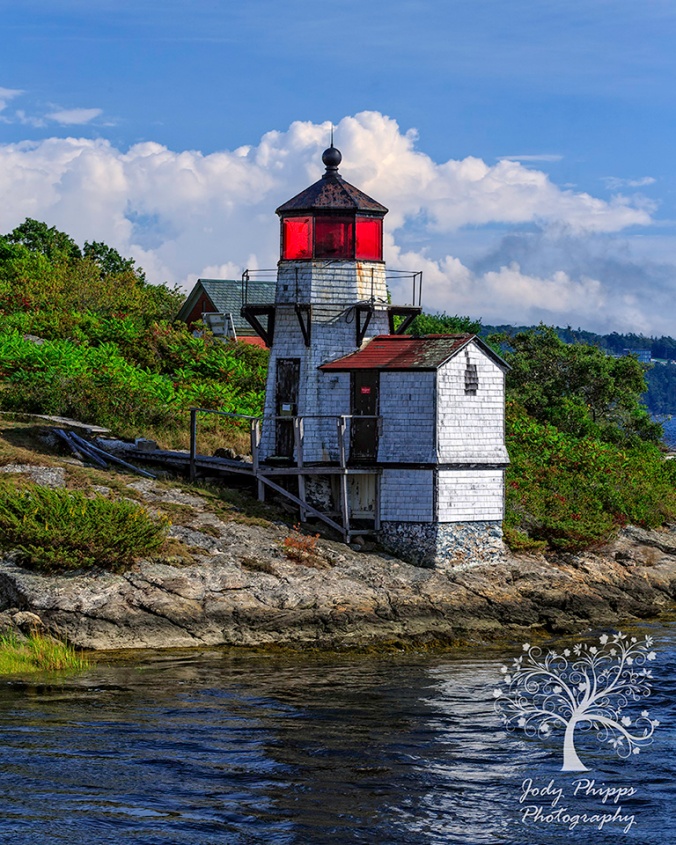
Built in 1898, the Squirrel Point Lighthouse was one of four built at the same time along the Kennebec River.
The last lighthouse we got to see (before the weather turned) was the Perkins Island Light, built in 1898 like the previous lighthouses we had seen. Perkins Island Light was built facing the town of Phippsburg.
Unfortunately, this was where the good weather on our trip ended and we hit a bank of fog that quickly obscured our views of not only the lighthouses, but also the shoreline. Thicker than pea soup, the fog allowed us to only see about two boat lengths in front of us making navigation difficult and photography next to impossible.
Due to the limited visibility, this was where our boat tour ended and we started making our way back up the river to Bath. Because the cruise was shortened, we also cruised back up the Kennebec River to the Bath Iron Works for water views of the ship building site including views of the USS Zumwalt (DDG-1000), a guided missile destroyer of the United States Navy.
My one complaint about the tour is that they offered rain checks for another tour when the weather is better. While this is a great idea for people that live close, it doesn’t do much for people that are on vacation. It would have been nice to offer even a partial refund to people that couldn’t take advantage of a rain check. That being said, I still planning on attempting the trip again the next time I ever get to Bath.
Until the next adventure…
